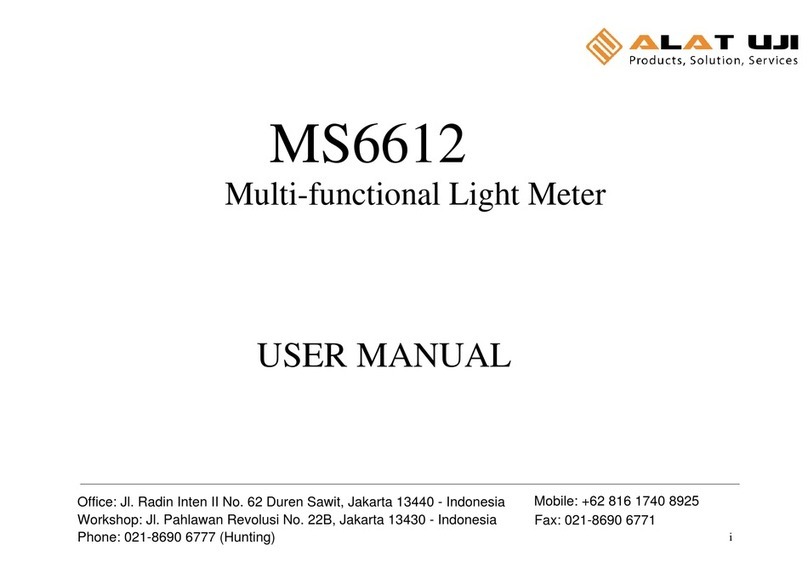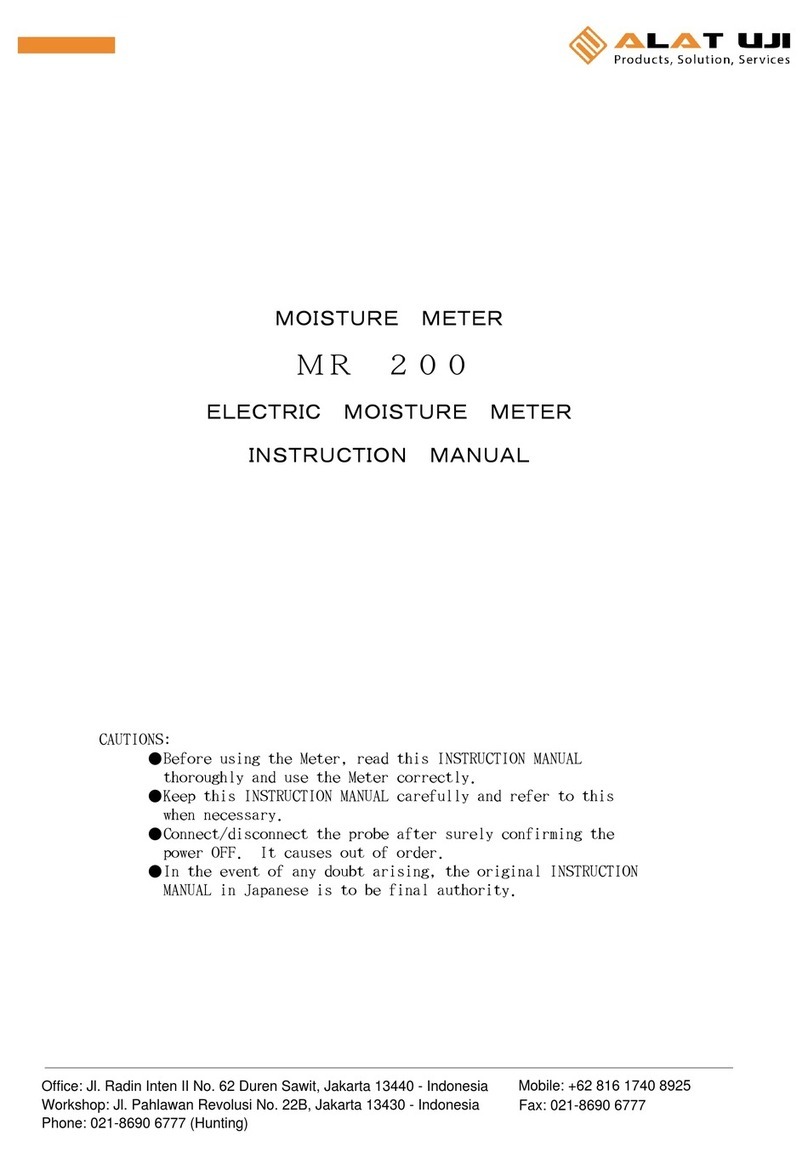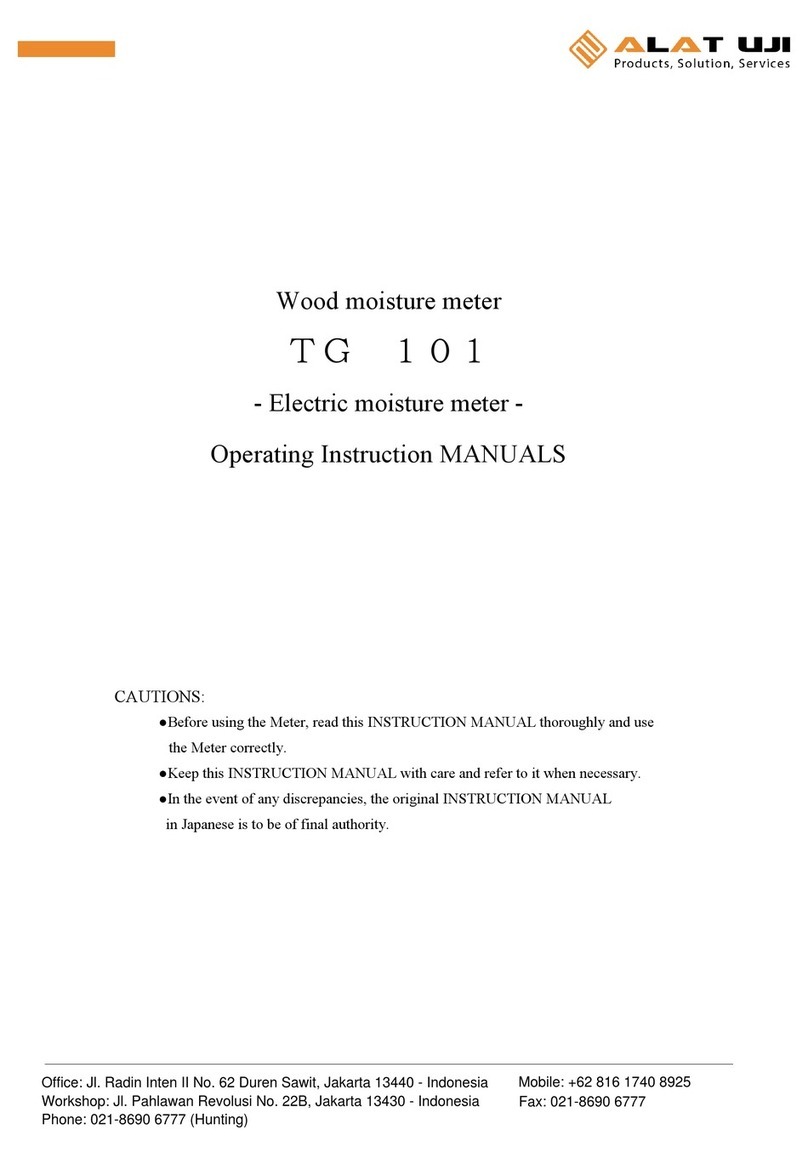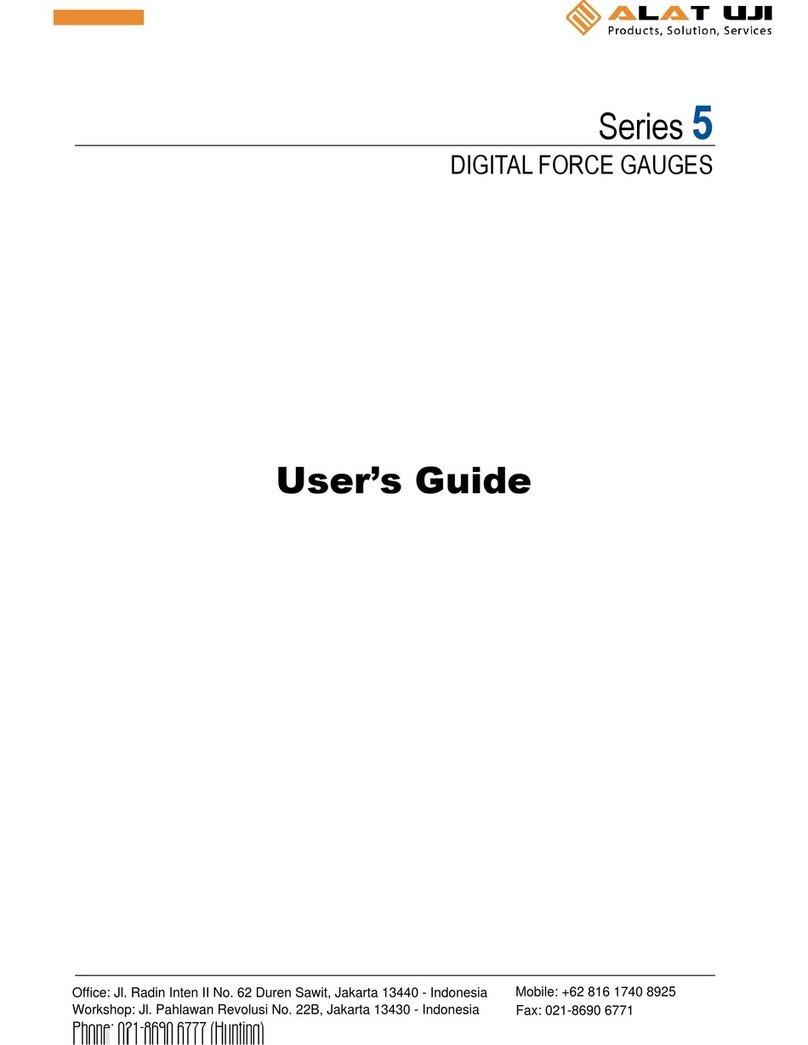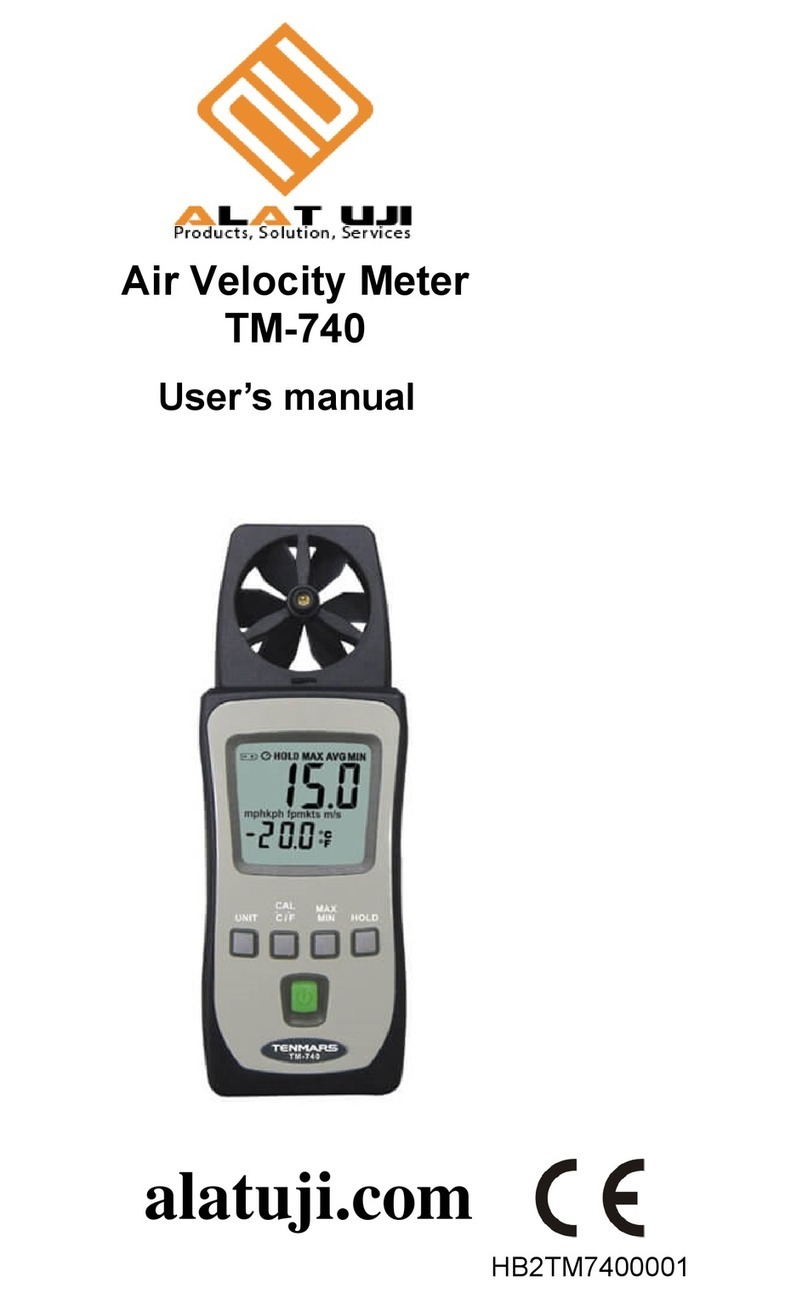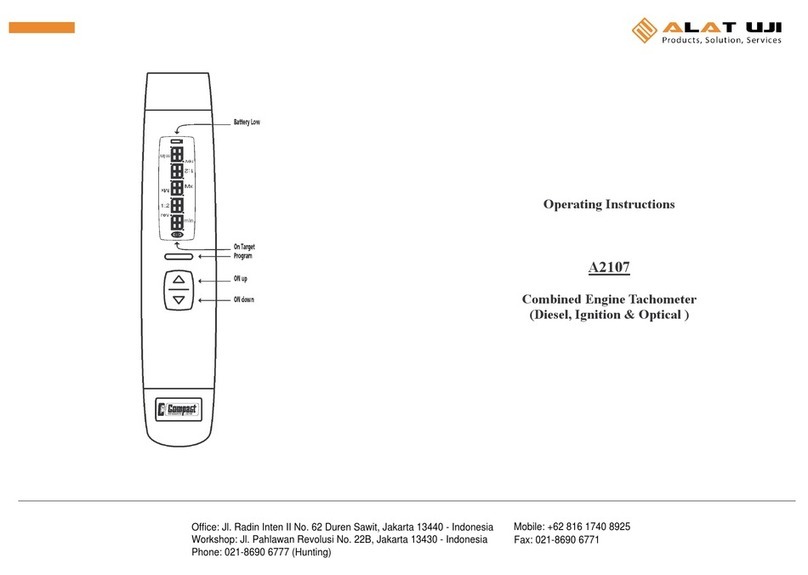
5
(If you press buttons too slowly in setup mode, the screen will revert to the normal display. To
return to the setup sequence, press and hold the LOGGER SET button again. To move ahead to
the next field in the sequence or to the next parameter, press the HOLD/ESC button.)
Pressing the REC/ENTER button causes the word “no” or “yES” to appear over the term
“Sd-F”. Press the ▼button to make a selection. Choose “yES” whenever a new SD card
is being used, or when a used card is being repurposed (from use with another SD card
instrument or a camera, for example) and all data on it is to be erased. Choose “no” to
preserve any data on a card previously used with this instrument.
If you choose “yES”, after you press the REC/ENTER button the instrument will prompt
you to confirm that decision by displaying the term “Ent” below “yES” and sounding
three beeps. To confirm that you want to begin the erasure/formatting procedure, press
the REC/ENTER. “Ent” will then flash several times and the instrument will sound
another three beeps to confirm that the SD card has been erased and formatted.
4. Set the date and time. Once the SD card has been set up, the word “dAtE” will appear in
the center of the display, along with the flashing value “00.00.00” at the lower left, above
“yy.mm.dd”. Set the current year by pressing the ▼or ▲button repeatedly until the
correct value appears above “yy”. Press the REC/ENTER button to store the setting. The
next screen that appears will have the value above “mm” flashing. Use the ▼or ▲button
to navigate to the current month and press the REC/ENTER button to store the setting.
When the next screen flashes the value above “dd”, again use the ▼or ▲button to
navigate to the current day and press the REC/ENTER button to store the setting.
Once you have set the date, the display will prompt you to set the hour, minute and second of
the current time. Again use the ▼or ▲buttons to navigate to the correct values, and the
REC/ENTER button to store the settings.
5. Set the datalogging sampling time. Once the date and time have been set and stored, the
display will show a value below the letters “SP-t”. Press the ▼or ▲button to decrease or
increase the flashing hour value until the desired number appears below “SP-t”. Press the
REC/ENTER button to store that setting. The minutes value will then flash. Press the ▼
or ▲button to decrease or increase the value and then press the REC/ENTER button to
store that setting. Finally, press the ▼or ▲button to decrease or increase the flashing
seconds value and then press the REC/ENTER button to store that setting.
6. Enable or disable auto power off. Once the sampling time has been set and stored, the
display will show the word “yES’ over the term “PoFF”. Press the ▼button until the
desired automatic power off management scheme (“yES” for enable; “no” for disable) is
displayed. Press the REC/ENTER button to store the selection. If enabled, the power off
function shuts off the DOH-SD1 after a period of inactivity of ten minutes.
7. Enable or disable the beeper. Once the auto power off function has been enabled or
disabled, the display will show the word “yES” over the word “bEEP”. Press the ▼
button until the desired setting (“yES” or “no”) is displayed, and then press the
REC/ENTER button to store the selection.












